The old Misión San Francisco de Asís acquired its
popular name, Mission Dolores, from a small stream that once flowed
nearby, Arroyo de Nuestra Señora de los Dolores. It is the oldest
building in the city of San Francisco and the only intact mission chapel
in the chain of 21 (of which it was the sixth) established under the
direction of Franciscan friar Father Junipero Serra. The site was
consecrated in 1776, and the chapel was built in 1782–91, with the labor
of Ohlone Indians. Its adobe walls are 4 ft (1.2 m) thick and its
red-tile roofs are typical of the “Mission Style” which can be seen all
over California in both old and new buildings. Reportedly, 36,000
handmade and sun-dried adobe bricks were needed to complete the
structure.
3321 16th St at Dolores St 415 621 8203
www.missiondolores.citysearch.com
Open 9am–4pm daily Dis. access Suggested donation $5 adult, $3 child; 40 minute audio tour in English $5
|
|
In 1769, Gaspar de Portola
led an expedition to establish missions in California, in the company of
Father Junipero Serra and 60 men. They founded Mission San Diego, and
then worked their way up to Monterey. Continuing up the coast, within
seven years Father Serra had established a mission in San Francisco,
with the assistance of Father Francisco Palou. In all, Serra founded 21
missions in Upper and Lower California, many of which survive.
|
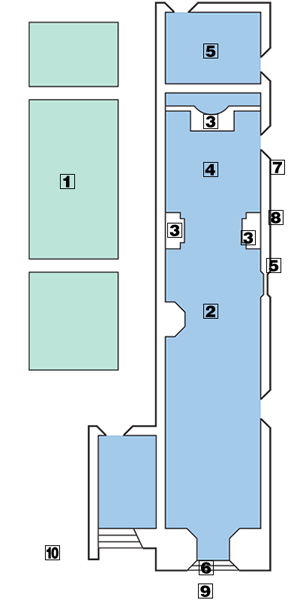
Plan of Mission Dolores
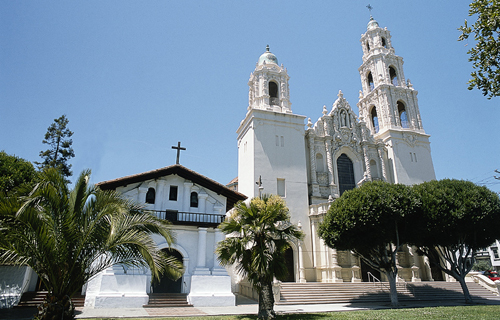
Chapel and Basilica façades
|
For a fresh, authentic taste of Mexico, head for Pancho Villa Taqueria.
|
|
|
Check out the old photos in
the covered walkway on the right side of the chapel, which depict, among
other things, early Indian festivals and the total destruction in 1906
of the church next door, which was replaced by the basilica.
|
|
|
Dolores Park is popular during the day, but at night it can become a connection point for drug dealers.
|
|
Top 10 FeaturesCemetery and Serra Statue This
leafy, picturesque cemetery is a gently contemplative place. Many of
San Francisco’s early leaders are buried here. Central to the space is a
life-size sculpture of Father Junipero Serra.
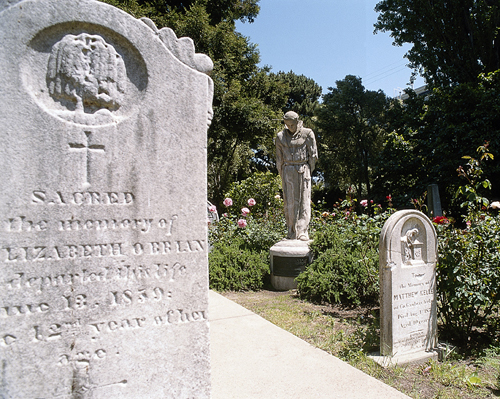
Chapel The
central building still retains the original redwood beams, lashed
together with rawhide. The amber-colored window glass gives the interior
warmth, reflected off gold-leafed fixtures.

Altarpieces The hand-carved, gilded and painted wooden reredos and side altars were brought from Mexico in the late 1700s and early 1800s.
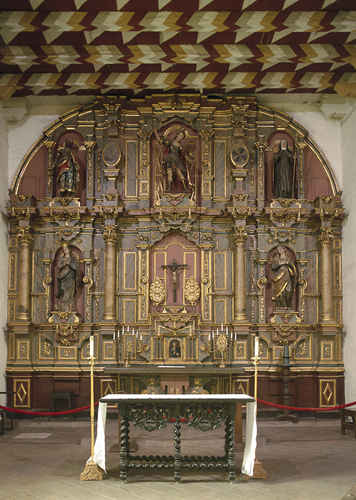
Beamed Ceiling Decoration The imaginative painted ceiling design derives from Ohlone basketry. Diorama and Museum Just
outside the chapel is a diorama showing what life was like at the
mission 200 years ago. A small museum at the back of the chapel contains
documents that pertain to the mission’s history. Mission Façade The
modest white façade of the chapel is typical of the Mission Style. Its
four columns support niches for three bronze bells, which are inscribed
with their names and dates. They were added to the mission in the late
18th century.

Sorrows of Mary Panels These
images along the front of each of two side balconies in the basilica
detail the seven moments when Mary was overcome with sorrow.
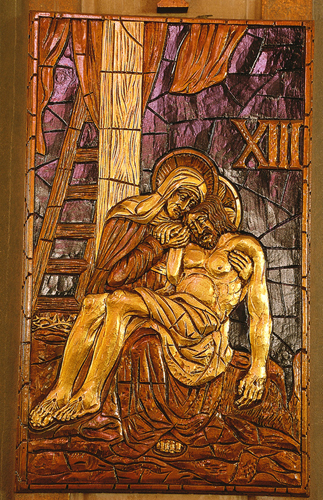
Choir Windows of St Francis At
the rear of the basilica, jewel-like stained-glass windows depict
scenes from the life of Saint Francis of Assisi, revolutionary patron
saint of San Francisco. The lower side windows depict the 21 California
Missions. Dolores Street Undulating
like a rollercoaster, this is one of the loveliest streets in San
Francisco. Palm trees grace its center all the way along.

Dolores Park One
of the few large green spaces in the Mission District, this park is
situated high on a hill and affords excellent views of the city. It was
originally the site of San Francisco’s main Jewish cemetery, but was
transformed in 1905.
|